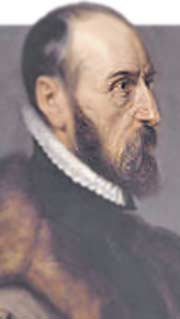
For this work he did not, as in the 'Theatrum', copy other people's maps but drew the originals himself which were later engraved by Jan Wierix. Koeman mentioned about the Parergon of Ortelius: This atlas of ancient geography must be regarded as a personal work of Ortelius. Abraham Ortelius (Amberes 1527-1598) fue un matemático, geógrafo, cartógrafo y cosmógrafo de origen flamenco. The atlas consists of one engraved portrait of Ortelius by Philip Galle, a woodcut architectural title border, 30 engraved double-page maps and two engraved double-page views. Pubblicato nel 1570, si ritiene che l'atlante di Ortelius abbia lanciato l'et d'oro della cartografia olandese. The present edition of 1595 is usually bound with the 1595 Latin edition of the Theatrum Orbis Terrarum. Abraham Ortelius (14 aprile 1527-28 giugno 1598) stato un cartografo e geografo fiammingo a cui stato attribuito il merito di aver creato il primo atlante moderno del mondo: Theatrum Orbis Terrarum, o 'Teatro del mondo'. During the following years, more map were completed and the Parergon became an atlas in its own right. The Parergon maps began appearing as supplements within Ortelius main work the Theatrum Orbis Terrarum in 1579 with 3 maps. Famous artists of the Middle Ages worked on this project, among them the famous German book artist Frans Hogenberg.Īkademische Druck- u.An atlas of the ancient world by Abraham Ortelius. With this late edition, Ortelius completed a formally unified, aesthetically high-quality, and easily readable map program in book format shortly before his death in 1598. The 1595 Edition was printed in Belgian Antwerp and is found today in the Istituto Geografico Militare in Florence. The 1595 Editionīetween 15, over 40 editions of the Ortelius Atlas emerged, as well as five extensions, so-called Addimenta, of the inventory of maps.

#Abraham ortelius biografia series
With this atlas, one is dealing with probably the clearest and most accurate map series of the Late Middle Ages. After the first edition of the Theatrum Orbis Terrarum, Ortelius reworked and expanded his atlas at regular intervals and reprinted it in various forms until his death in 1598. He thereby referred to texts that no longer exist today or are only accessed with great difficultly. In contrast to his colleagues, Ortelius clearly referenced the sources of his maps and texts. It was published between 15 in 42 editions and in 7 languages: Latin, German, Dutch, French, Spanish, English, and Italian. The Ortelius Atlas was funded by Gillis Hooftman, an Antwerp merchant, banker, and ship-owner. His atlas represents the crowning of his most important work. He composed some of the most influential map series of the Late Middle Ages. The Formation of the Map SeriesĪbraham Ortelius was a Flemish geographer and cartographer. Alongside maps and cartographical information, the precious work is adorned with delightful representations of landscapes and architecture.


The 1595 Edition of the work is one of the latest editions and contains 147 gorgeous colored tables with information about the regions of the world known at that time. The Baroque style illuminated codex has been numerously reworked and republished. A súa importante obra valeulle o título de 'Ptolomeo do século XVI', alcume que lle deron os seus propios colegas e que facía referencia ao profesor Claudio Ptolomeo, considerado un dos pais da astronomía. It is considered to be first modern and first commercially successful atlas in the world. Abraham Ortelius (1527-1598) foi un matemático, xeógrafo, cartógrafo e cosmógrafo de orixe belga. The atlas created by Abraham Ortelius is a work which united all of the cartographical findings of the 16th century. Abraham Ortelius (Abraham Ortelius, Hortelius u Ortelio Amberes, 1527 - 1598) Cartógrafo y cosmógrafo flamenco. The Most Beautiful Books of Hours and Prayer Books The Most Beautiful Facsimiles Under 1,000€


 0 kommentar(er)
0 kommentar(er)
